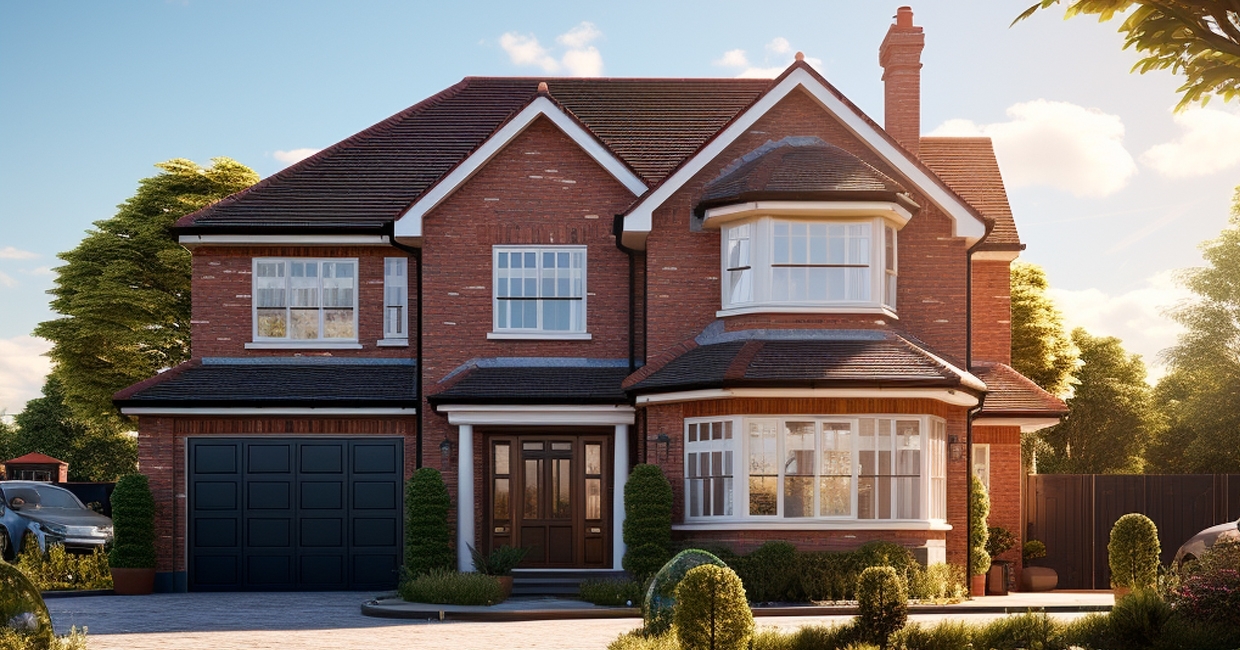Barker and Stonehouse has published its take on the nation’s dream home – drawing upon data from 2000 people to discover what features and styles they would look for in their perfect house, and rendering the results using AI technology …
Barker and Stonehouse has utilised AI technology (Midjourney) to visualise what the UK’s dream home might look like, based on a recent survey.
Thanks to its blend of idyllic beaches and country settings, South-west England was the most popular location, and the results showed that the UK dreams of a four-bedroom, two-bathroom, detached property with a 500+ ft2 garden. According to the Office for National Statistics, the average cost for a detached property in the UK in September was £458,707.
If money was no object, the top picks for luxury features inside the house included a kitchen island (the top feature for 25%), heated flooring (also 25%) and a real fireplace (20%).

Asked to pick three additional spaces, respondents again chose practicality over luxury. Top selections included an ensuite (33%), a laundry/utility room (31%) and a walk-in wardrobe (28%). Some were keener to push the boat out – 22% longed for an indoor pool, and 14% desired either a games room or home gym.
When it came to style choices, the respondents picked a modern and contemporary interior style for their dream home, with a focus on minimalistic design and sleek simplicity. Opulent and extravagant decor took a back seat, with soft neutrals and subtle shades ruling the roost everywhere from the bedroom to the home office and living room.

For furnishings, a divan bed was the most popular choice in which to have the best night’s sleep (30%), and in the living room Brits would select a corner sofa style (19%) with leather upholstery (28%).
Helena Davies, head of home buying at Barker and Stonehouse, comments: “We’ve all had moments of fantasising about what our dream home would be like, and it’s been really interesting to see what the nation would choose. Even if money wasn’t a factor to consider, people are less interested in mansions and more interested in aspiring to have a large but comfortable family home.
“Using AI to visualise what this home would look like and really bring this to life was incredible, and shows how AI can be used for interior planning.”

Richard Hodgkinson, director at London-based XUL Architecture, adds: “The design industry has the potential to use AI to gain a deeper understanding of homeowners. This integration not only minimises ambiguity but also creates a more co-operative and enjoyable design journey.
“Designers can implement AI and collaborate with homeowners to improve efficiency. AI algorithms can quickly evaluate homeowners’ needs, room specifications and environmental factors, which speed up the initial design phases and provide innovation. The potential applications of AI in the design field are limitless, with the potential to transform our homes.”









